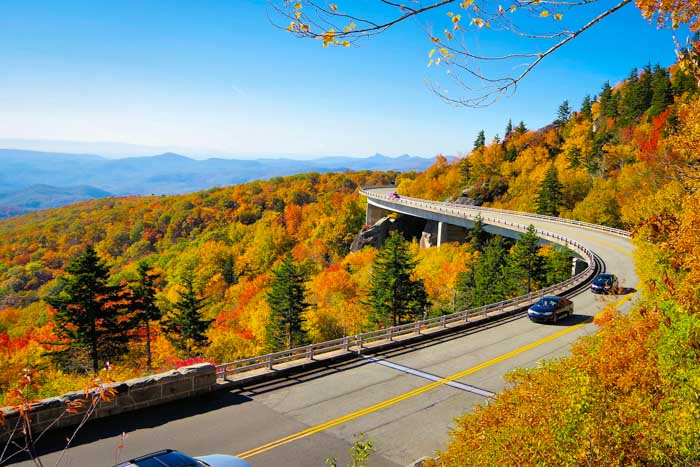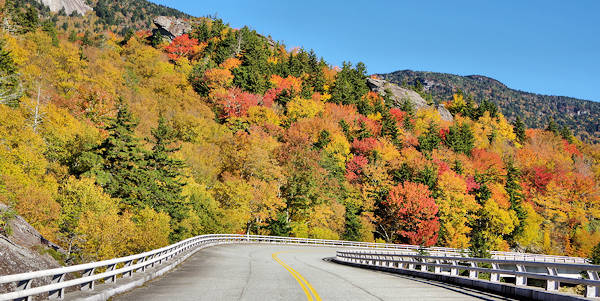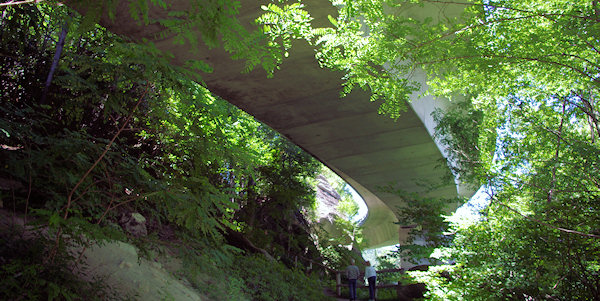
This 1243-ft. concrete segmental bridge on the Blue Ridge Parkway snakes around the slopes of Grandfather Mountain in North Carolina. It was completed in 1987 at a cost of $10 million and was the last section of the Blue Ridge Parkway to be finished. To ride across and get a close look at this engineering marvel, drive north on the Parkway for 78 miles from Asheville to Milepost 304.

The Linn Cove Visitor Center is located at the south end of the Viaduct (Asheville side). You can read about the construction of the Viaduct and get general Parkway information.

Hiking Under and Above the Viaduct
Take a one-mile round-trip hike for an up-close view of this engineering marvel. An accessible paved trail begins at the visitor center and leads to a beautiful view of the Viaduct from underneath, and gives hikers access to the Tanawha Trail. You will see how the Viaduct almost floats in the air without disturbing the land below. The paved portion ends in around 1/3-mile. Continue up the dirt trail and climb by a huge boulder for another 1/3-mile to find the rock to stand on for the photo op at the top of the page. After you climb and switchback up over the Viaduct, there will be a side trail to the right. (Look for the sign on left to at the intersection of the side trail so you know that you are in the right spot!)
The Tanawha Trail (see Tanawha Trail Map) is a 13.5-mile trail that more or less runs parallel to the Parkway from Beacon Heights parking area at mile marker 305.5 to Julian Price Park at mile marker 297. This is also the Mountains-to-Sea Trail.
History of the Linn Cove Viaduct
The Viaduct was needed because of the damage that a traditional cut-and-fill road would have caused to Grandfather Mountain. The Viaduct was designed by Figg and Muller Engineers, Inc. and construction began in 1979. It consists of 153 segments weighing 50 tons each. The Viaduct was constructed from the top down to minimize disturbance to the natural environment. This method eliminated the need for a "pioneer road" and heavy equipment on the ground. The only construction that occurred at ground level was the drilling of foundations for the seven permanent piers on which the Viaduct rests. Exposed rock was covered to prevent staining from concrete, epoxy or grout. The only trees cut were those directly beneath the superstructure.
The bridge's segments were precast at an indoor facility at the south side of the parkway. After being transported to the bridge site, each section was lowered into place by a custom crane placed on either edge of the existing structure. The bridge has received eleven design awards.
After 52 years of construction, the Blue Ridge Parkway was completed in September 1987. Ground was broken on September 11, 1935 at Cumberland Knob, North Carolina, and all but 7.5 of its 469.1 miles were constructed by 1967. During the intervening twenty years, this final section - which skirts the rugged and rocky perimeter of Grandfather Mountain in North Carolina - presented state and federal officials with a number of obstacles that were solved with perseverance and innovation.
There are some nearby hikes along the Parkway that you should not miss, including Beacon Heights and Rough Ridge.


